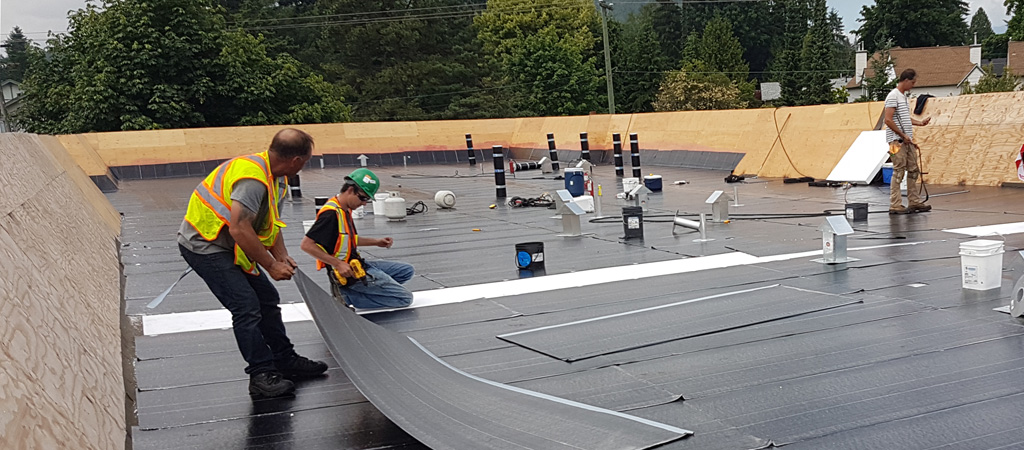Longest lasting flat roof material
Commercial flat roof materials

Flat horizontal commercial roofs are increasingly being utilized in a range of construction projects in northern climates. In the past, flat roofs were only used for commercial/industrial or multi-level residential buildings, while single-family homes or smaller low-rise buildings would be constructed with pitched roofs. While a pitched roof has advantages for easy and long-lasting weatherproofing, flat roofs have a significant design advantage in that they require far fewer materials to construct and provide more flexibility for the layout of interior spaces. However, since water and debris won’t easily slide off of a flat roof like a pitched roof, how do you choose a durable, long-lasting flat roof material? What materials last the longest, and do they also provide the greatest value for the cost?
Flat roofing material has two main product categories:
The BUR roof (built-up roof) is the oldest style of flat roof in commercial roofing use. It is made up of layers of tar and gravel over a base paper. The advantages of a BUR roof are that it is easy to repair or dismantle, the maintenance costs of the flat roof are low over the life span of the roof, and if cared for, it provides excellent overall protection against water, adverse weather events and UV rays. The modified bitumen covering builds on the strengths of the BUR roof above, however rather than layers of tar being painted on and graveled, modified bitumen roofing is rolled on reels and can be laid down in overlapping sheets, which is both faster (and thus cheaper) to install and delivers a more robust product. The modified bitumen roof material is also more flexible at low temperatures. However, bitumen-based roofs can be damaged relatively easily, and they don’t last very long – a BUR or modified bitumen roof will only reliably last for ten to fifteen years.
Single-ply membrane roofing represents a big advance in roofing durability and lifespan. You can expect a properly-installed and well-maintained single-ply membrane roof to last anywhere from twenty-five to fifty years, depending on the climate conditions they are exposed to. And they aren’t necessarily much more costly than BUR or bitumen roofs: EPDM roofing material is on-par cost-wise with BUR roofs but can last much, much longer. The main disadvantages of rubber-based EPDM roofing is that it isn’t very environmentally friendly to produce or dispose of, and it tends to absorb heat. However, it is so long-lasting and at such a good price, it is worth considering. Other single-ply membrane options include products like PVC membranes, TPO membranes, and spray-on silicone – each comes with its own pros and cons, and have a similar long lifespan as EPDM roofing, albeit often at a higher price or with fussier installation and maintenance requirements.
Single-ply membranes represent the longest-lasting flat roofing material options, which means that even higher up-front costs can be justified by low ongoing replacement costs. When planning your roofing project, it is worth planning for the life time of the building as much as possible.

